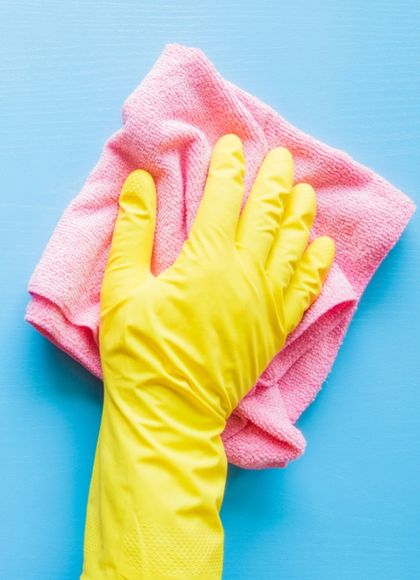What Are Surgical Gloves?
Surgical gloves, a vital part of any healthcare professional's toolkit, are specially designed hand coverings. They are used primarily by surgeons, nurses, and other healthcare professionals during surgical procedures or in any situation where there is a risk of exposure to bodily fluids, bloodborne pathogens, or harmful chemicals. They serve two essential purposes: to protect the healthcare worker from contamination and to prevent the transmission of infections from the healthcare worker to the patient.
The history of surgical gloves dates to the late 19th century. The trend was popularized by William Stewart Halsted, the first Surgeon-in-Chief of Johns Hopkins Hospital, to protect his nurses from dermatitis caused by the antiseptic solution. The advantages of using surgical gloves in preventing infections were soon realized, and the practice became universal.
What are Surgical Gloves Made of?
Surgical gloves are manufactured from different materials, each with its unique benefits and potential drawbacks. We list them below for your convenience:
• Latex Gloves: For many years, latex, a natural rubber material, was the gold standard for surgical gloves. They offer excellent elasticity, durability, and a snug fit, allowing for maximum dexterity. However, they may cause allergic reactions in some individuals, leading to the development of synthetic alternatives.
• Nitrile Gloves: Nitrile gloves are made from nitrile butadiene rubber, a synthetic material, and they have become increasingly popular as a latex-free option. Here are some defining characteristics: 1. Allergy-friendly: Nitrile is a safe choice for users with latex allergies or sensitivities. 2. Chemical Resistance: They have excellent resistance to a wide range of chemicals, including certain disinfectants and chemotherapy drugs. 3. Puncture Resistance: Nitrile gloves are highly puncture-resistant, making them ideal for procedures requiring sharps handling. 4. Fit and Feel: While earlier versions were critiqued for less comfort and dexterity compared to latex, modern manufacturing has significantly improved nitrile's fit and feel.
• Neoprene (also Polychloroprene) Gloves: Neoprene is another synthetic rubber that is used for making surgical gloves. The material shares some similarities with nitrile, but with a few distinct features:
- Allergy-friendly: Like nitrile, neoprene does not contain latex proteins and is safe for users with latex allergies.
- Chemical Resistance: Neoprene gloves offer strong resistance to acids, bases, and alcohols, but their chemical resistance isn't as broad as nitrile.
- Heat Resistance: Neoprene performs well in high temperatures and remains flexible when cold, a unique feature among these glove materials.
- Comfort: These gloves provide excellent comfort and flexibility, comparable to latex gloves.
• Polyisoprene Gloves: Polyisoprene gloves are the most recent entrant to the non-latex surgical gloves category. They are synthetic, latex-free, and offer similar comfort and elasticity to natural rubber latex gloves without the risk of allergy: 1. Allergy-friendly: As a synthetic material, polyisoprene is suitable for those with latex allergies. 2. Latex-like Feel: Polyisoprene gloves mimic the comfort, flexibility, and tactile sensitivity of natural latex gloves more closely than nitrile or neoprene. 3. Strength and Elongation: Polyisoprene matches natural rubber latex in strength, stretch, and fit. However, they don't provide as much puncture resistance as nitrile. 4. Limited Chemical Resistance: Like neoprene, polyisoprene gloves don't offer as extensive chemical resistance as nitrile gloves.
Overall, all three glove materials have their pros and cons compared to Latex. Nitrile gloves provide the best chemical and puncture resistance, while Neoprene gloves excel in heat resistance and comfort. Polyisoprene gloves, on the other hand, come closest to replicating the feel and flexibility of natural latex gloves, making them a favoured choice for surgical procedures. Your final choice will depend on the specific needs of your medical practice and the potential risks involved.
How Should Surgical Gloves Fit?
A well-fitting surgical glove is crucial for both the safety and efficiency of the medical procedure. Gloves that are too loose may compromise dexterity, while gloves that are too tight can cause hand fatigue and potentially tear during surgery. The ideal surgical glove should fit snugly but comfortably around the fingers and hand, with enough flexibility to allow unrestricted movement. It should not have excess material around the fingers or palm nor cut into the skin around the wrist.
How to Wear and Remove Surgical Gloves?
Wearing and removing surgical gloves properly is just as crucial as choosing the right gloves. Incorrect donning and doffing can lead to contamination and increase the risk of infection transmission.
To wear surgical gloves:
- Ensure hands are clean and dry. If wearing a watch or jewellery, remove it.
- Open the sterile glove package, using a technique to maintain sterility.
- Slide your hand into the glove, keeping your hand flat and thumb tucked in to ease the process. Ensure the cuff covers your wrist.
- Repeat with the other hand.
To remove surgical gloves:
- Pinch the outside of one glove at the wrist without touching your skin.
- Peel the glove away from your body, pulling it inside out. Hold the removed glove in your gloved hand.
- Slide an ungloved finger under the wrist of your remaining glove, careful not to touch the outside of the glove.
- Peel it off from inside, creating a bag for both gloves, and dispose of properly.
How to Determine Surgical Glove Size?
Determining the correct surgical glove size is integral to ensure a proper fit. Most manufacturers offer a size chart, and sizes range from extra small to extra-large. To measure your hand, use a flexible measuring tape around your hand's widest part, excluding the thumb - usually around the knuckles. Compare your hand measurement with the size chart to find the best fit. Here is a great guide on the whole measurement process.
In conclusion, surgical gloves are a staple in healthcare settings due to their crucial role in infection control. Understanding what they are made of, how they should fit, and how to wear and remove them properly is vital for both healthcare professionals and anyone involved in procedures that require a sterile environment. Finding the right size and fit will significantly contribute to your overall efficiency and safety.
Sources
Australian Government Department of Health. (n.d.). Personal protective equipment (PPE) for the health workforce during COVID-19. Retrieved from https://www.health.gov.au/health-alerts/covid-19/coronavirus-covid-19-advice-for-the-health-and-disability-sector/personal-protective-equipment-ppe-for-the-health-workforce-during-covid-19
Johns Hopkins Medicine. (n.d.). Founding Physicians. Retrieved from https://www.hopkinsmedicine.org/about/history/history-of-jhh/founding-physicians.html
Alfred University Environmental Health & Safety. (n.d.). How to Determine Glove Size. Retrieved from https://my.alfred.edu/environmental-health-safety/determine-glove-size.cfm













